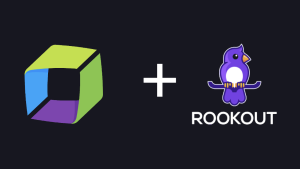Hops and DevOps; an unlikely pairing, but one that turns out to go very well together! Dynatrace hosted another tasting event for our community, which included some craft beers from a local brewery and the very hot topic of DevOps – one that has been omnipotent in the IT industry almost since its inception in 2009.
We took some time to sit down with a few beers and discuss how DevOps has been adopted, the challenges and tips to do so, as well as what is next on our customers’ DevOps journey. We also had the pleasure of our very own resident DevOps guru Andi Grabner, who’s been contributing to DevOps ever since it’s been around, join the discussion, providing our panel with his 20+ years of experience in high performing cloud-scale applications.
Part of the event included a customer panel, with speakers including Chris Deane, Head of Digital Platform and Security Engineering at BT Consumer, Ben Harris, Head of Engineering at Kingfisher, Andy Lee, Head of Application Services at Willmott Dixon, and Mat Levitt, Head of DevOps at PA Media Group (PA).
During our customer panel, it was interesting to hear and discuss which stage of the DevOps journey each organization was at, in addition to hearing how those journeys had been thus far.
The DevOps journey so far
DevOps stands to introduce some serious benefits in an organization both for the business and its technical teams. Chris Deane pointed out that developers having “skin in the game” has been transformational to critical business periods – most notably utilizing Dynatrace to encourage the teams to shift-left and reduce the gap between Dev and Ops to drastically reduce major incidents, increasing stability and uptime, but most notably – achieve all this faster.
DevOps is vital to achieving this velocity. This increase in speed, alongside a more unified team utilizing a single source of truth to build trust, has enabled the business to benefit too; having the capability to adapt more dynamically to pricing changes, be more agile with new product offerings and follow the market more accurately and quicker than ever before. Dynatrace also assists in shifting left via integrations such as JIRA, Jenkins, Ansible, load testing tools, and ITSM products – seamlessly becoming part of their ecosystem too.
Willmott Dixon had a similar experience, explaining how DevOps has enabled teams to respond better to business needs because of more accurate reporting. For the team at Willmott Dixon, DevOps introduced faster and more accurate feedback loops – leveraging surveys, forums, tooling, even sending teams onsite to experience the business first-hand. When combined with a monitoring platform, this enables the business and tech leadership teams to closely follow the performance of these applications, adapting faster than ever before.
Mat Levitt, Head of DevOps at PA Media Group highlighted how DevOps has enabled his teams to introduce many new pieces of functionality. Some examples are infrastructure as code, self-healing pipelines, and high levels of automation.
Challenges of DevOps
All these benefits didn’t come without their challenges. Mat went on to explain the biggest hurdle at PA was the lack of standardization across technologies and business units. Over the years, many technologies had been brought into the business making an increasingly complex environment with a plethora of tooling surrounding them. To tackle this, Mat and his team brought in Dynatrace. The team used Dynatrace as a monitoring platform that could sit across all technologies and as a result help the culture at PA. Since the introduction of Squads, the typical “silos” between teams have been all but removed – enabling their IT teams to “become one department”.
PA was certainly not the only business finding a multiple technology stack was slowing down DevOps adoption. BT also faced a similar challenge, having a very disparate world of technologies and tooling including older legacy systems. Chris Deane stressed that having Dynatrace sitting across all these technologies and providing a single source of truth has been vital in having a wide-reaching DevOps mentality. Each team can now communicate in a common language. Chris also explained how vital a low Total Cost of Ownership (TCO) of a monitoring solution is. With Dynatrace, BT has reduced monitoring overhead by having a centralized platform, as well as providing automated root cause analysis via Davis®, Dynatrace’s AI engine, which has eliminated war room scenarios and fast-tracked troubleshooting. As a result, teams spend less time firefighting and more time focusing on automation and DevOps adoption.
Ben Harris, from Kingfisher, highlighted a different challenge; DevOps works well in the applications that adopt the microservices-based architecture, as it lends itself more easily to this style of working. This means those larger, monolithic applications need to be re-architected. Bringing DevOps to these older applications has been difficult since they tend not to have the key technical and business metrics which quantify the value and benefits of implementing DevOps. By leveraging Dynatrace, Kingfisher has been able to highlight the benefits of DevOps to gain support throughout the business and IT organizations.
Lessons learned from the field
My favorite part of the day was when it came to our community sharing tips in adopting the DevOps methodologies. Both BT and PA spoke very highly of Spotify’s “Squads & Tribes” model, sharing that it encouraged and simplified adopting DevOps for the internal teams and further enabled the abolition of silos. Chris from BT also went on to speak highly of the book called team topologies – a definite must-read!
Culture is something that was highlighted in some form by all the panelists; noting that DevOps fundamentally requires a mindset shift and a change in the culture within the organization. Andy from Willmott Dixon highlighted it isn’t just a desirable item, but “DevOps mentality is fundamentally key to business success”.
One common theme behind driving culture change was ensuring there is a common language to do so, and a way to ensure that key metrics for success are shared and accessible by both the business and technical teams that are engaged. In these scenarios, Dynatrace is the tool used to drive success in both areas, which is why Dynatrace has implemented Service-level objectives (SLOs) to track these metrics in real-time. Providing a single source of truth and unified, measurable metrics across the whole environment for every team from development through to operations encourages adoption, eliminates silos, and provides key business and technical metrics which are accessible to everyone. This is a major driver in promoting the adoption of DevOps.
Given the journeys that the panelists had been talking us through, showcasing challenges, giving tips along the way, and showcasing the benefits of DevOps adoption. We then asked – Where are you going next with DevOps in your business?
They all agreed there are constant changes and growth in the realm of DevOps, which in its very nature demands constant evolution, meaning it’s likely to be a never-ending journey. Many are setting their sights on NoOps as the next step in their journeys.
At PA, the team is currently investigating NoOps and how self-service and automation could pave the way to this new nirvana, backed by technologies such as Kubernetes. The next obstacle to tackle is the test and release process, automation, and streamlining wherever possible, adding in new feedback loops which are so highly coveted, but also providing more stable and less manual releases, enhancing the automation within the business.
BT Consumer & Kingfisher are looking to implement security into this process – commonly known as DevSecOps. Shifting security further left and making it more proactive in production is a very hot topic now and plays very well with the DevOps approach – yet another benefit DevOps can bring to an organization. As with anything, this brings whole new challenges in an everchanging landscape. Both are looking to begin utilizing the Dynatrace Application Security module in their environments, with BT already deploying the module, with value already provided in showcasing issues and providing visibility into security in real-time. You can read more about our security module here.
We’d like to thank all our attendees and panelists on the day for the fantastic session and wish them all the best in their DevOps endeavors!




Looking for answers?
Start a new discussion or ask for help in our Q&A forum.
Go to forum